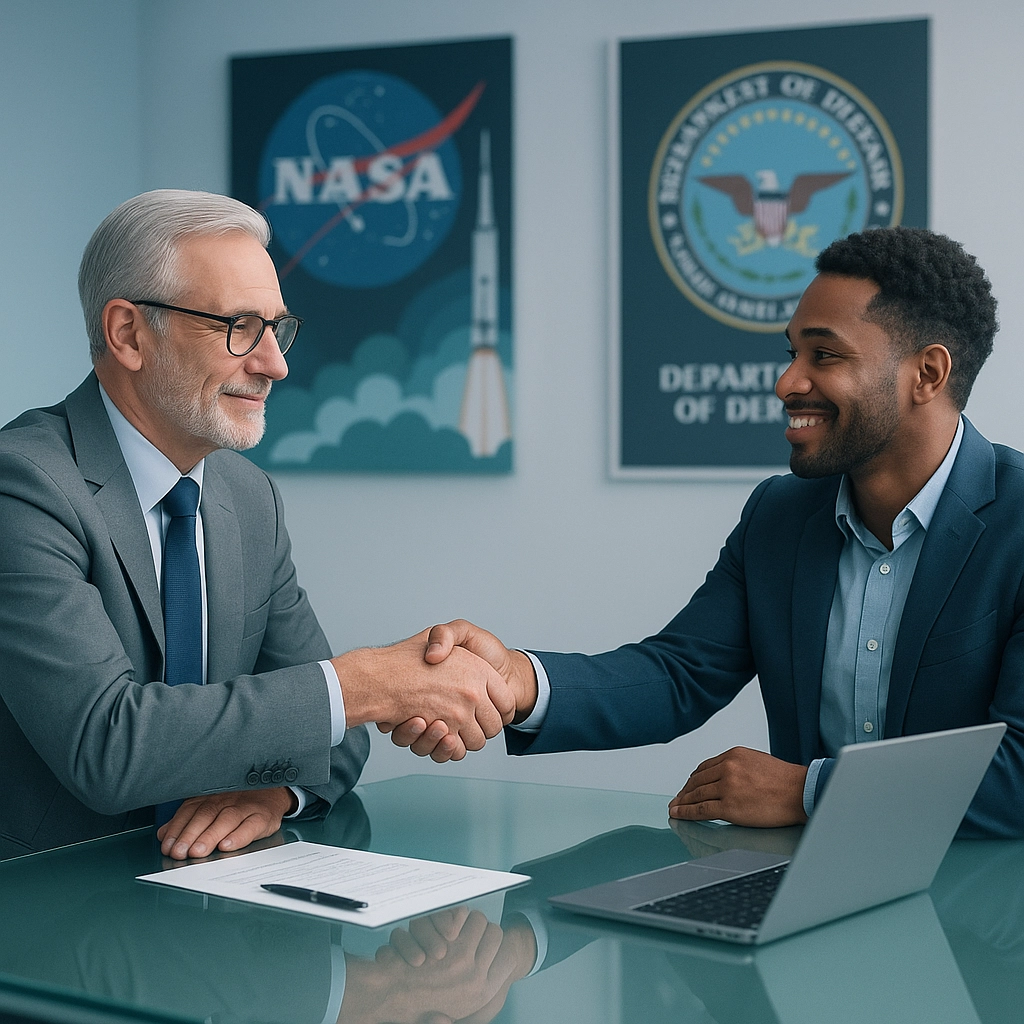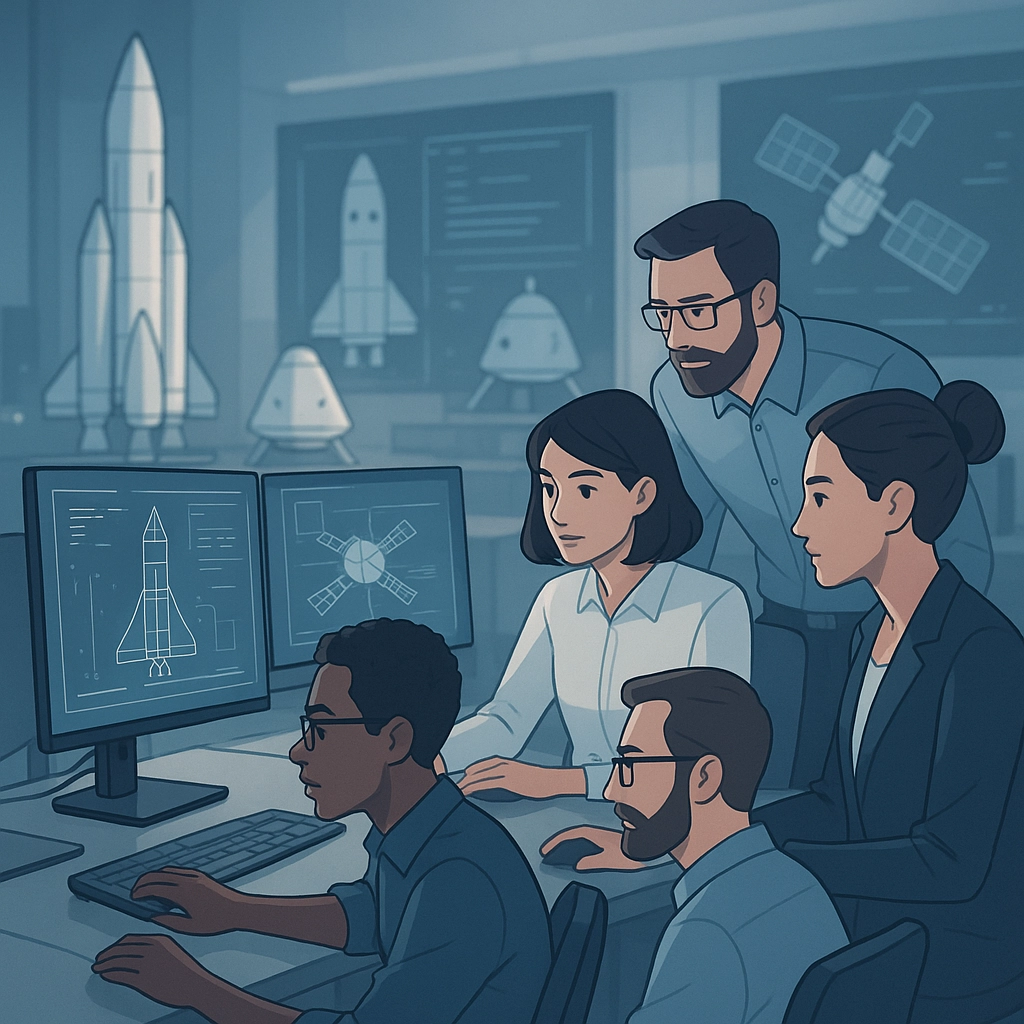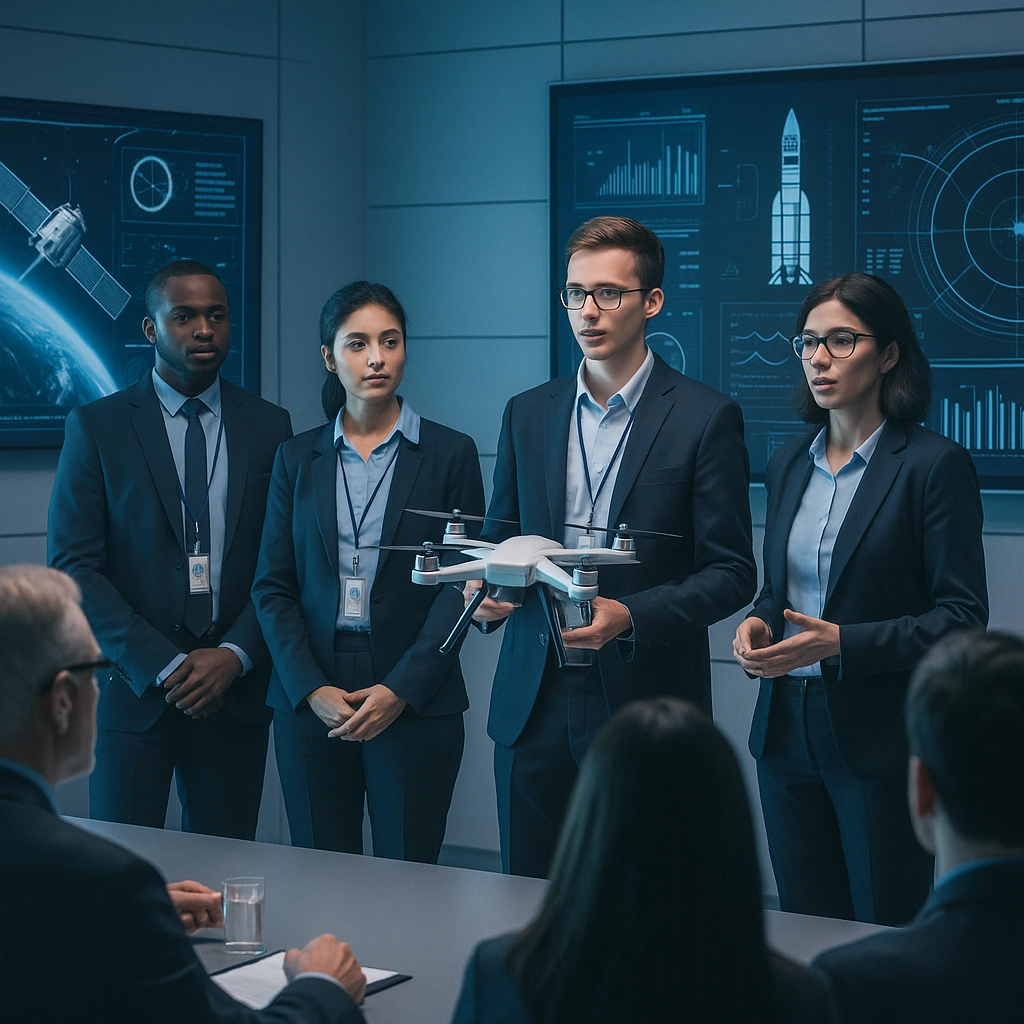The Power of Partnership: Making the Most of DoD and NASA Mentor-Protégé Programs
- Kaana Konya
- Aug 21
- 4 min read
When it comes to government contracting, the phrase “It’s all about who you know” couldn’t ring truer—especially for small businesses breaking into defense and aerospace markets. The Department of Defense (DoD) and NASA Mentor-Protégé Programs aren’t just about sourcing opportunities—they’re designed to nurture long-term partnerships, foster innovation, and ultimately create a stronger, more diverse industrial base for America’s most critical missions.
Understanding Mentor-Protégé: The Basics
Before we dive into maximizing your participation, let’s break down what these programs are all about.
Both the DoD and NASA Mentor-Protégé Programs (MPPs) aim to connect established prime contractors (mentors) with small businesses (protégés). Through these formal agreements, mentors share technical expertise, business insights, and open doors to big-league federal contracts. In return, they help strengthen their own supply chain with innovative, agile partners.
The NASA Advantage: A Fresh Take
NASA’s Mentor-Protégé Program, modeled after DoD’s framework, was relaunched in November 2024 with a sharper focus. No longer a one-size-fits-all approach, NASA now targets specific industry sectors vital to its mission, such as cutting-edge software development, advanced aerospace manufacturing, and research & development. This transformation means participants are working on the front lines of technology and scientific discovery.
By aligning the program with long-term mission objectives and targeted North American Industry Classification System (NAICS) codes, NASA ensures both mentors and protégés invest in solutions that propel space exploration and scientific advancement.

The DoD’s Proven Platform
The DoD’s Mentor-Protégé Program remains a powerhouse for small business development. With decades of proven successes, the DoD’s MPP supports a wide range of small business concerns, creating an on-ramp to the sprawling world of defense contracting. Here, you’ll find a broader scope of opportunities—from IT and cybersecurity to advanced manufacturing, intelligence, and logistics.
Both agencies run their MPPs independently, but savvy small businesses can strategically participate in both.
Program Benefits: Why Get Involved?
If you think it’s just about networking or subcontracting, think again. These mentor-protégé programs are stacked with benefits, including:

Eligibility: Who Qualifies and How?
Whether you’re looking at NASA or DoD, understanding eligibility is essential.
NASA Mentor-Protégé
Mentor Criteria:
Must be a current NASA prime contractor in specified NAICS codes
Must have an approved small business subcontracting plan
Letter of approval is valid for up to six years
Protégé Criteria:
Women-Owned and Economically Disadvantaged Women-Owned Small Business Concerns (WOSB/EDWOSB)
Veteran-Owned and Service-Disabled Veteran-Owned Small Business Concerns (VOSB/SDVOSB)
Historically Underutilized Business Zone (HUBZone) Small Businesses
Historically Black Colleges and Universities (HBCU) and Minority-Serving Institutions (MSI)
NASA SBIR/STTR Phase II companies
AbilityOne Program entities
Notably, protégés aren’t required to have an existing NASA contract—making the program incredibly accessible. However, each protégé can have only one active NASA mentor-protégé agreement at a time.
DoD Mentor-Protégé
Mentor Criteria:
Must be a large business prime contractor with at least one active DoD contract
Must have an approved subcontracting plan for small business outreach
Protégé Criteria:
8(a), HUBZone, WOSB/EDWOSB, SDVOSB, and other small business types as identified by DoD’s priorities
Disadvantaged or minority-owned businesses meeting specific DoD requirements
Dual Participation: A single company can participate in both NASA’s and DoD’s MPPs as long as it has the resources for multiple agreements—a great way to diversify experience and unlock more doors.
How to Maximize Your Mentor-Protégé Experience
Joining one of these partnership programs is a major opportunity, but it’s what you do with the relationship that really matters. Here are some tips from our team at NVS Strategic Solutions:
1. Set Clear, Measurable Goals
Before the ink dries on your agreement, align on outcomes. Is your focus on technology transfer? Mastering compliance? Upgrading cybersecurity practices? The best mentor-protégé relationships start with a shared vision and realistic milestones.
2. Develop a Learning Mindset
Think of the mentor-protégé program as a two-way street. Protégés should approach the relationship with curiosity, openness to feedback, and the agility to roll with changes. Mentors who listen and tailor support see the greatest impact.

3. Leverage Technical and Business Support
Don’t be shy—ask for technical demonstrations, introductions to key program managers, even site visits. Business development help, such as capture management and proposal writing tips (hint: check our Proposal Writing resources), can leapfrog your growth trajectory.
4. Build in Accountability
NASA, for example, manages semi-annual performance reviews to ensure all parties are delivering. Regular check-ins, documentation, and transparent progress reporting pave the road to success.
5. Look for Synergy Across Programs
If you qualify, consider pursuing both NASA and DoD partnerships. Each agency has different missions and contracting styles—exposing your team to new challenges and expert networks. These dual tracks significantly amplify brand recognition and technical capabilities.
6. Invest in Next Steps
Once your MPP agreement concludes, build on the momentum. Enter joint ventures, pursue prime bids, or offer your newfound expertise as a direct subcontractor. The relationships, technical know-how, and past performance you earn in MPP aren’t just badges—they’re launchpads.
Real-World Example: L3Harris and Parametric Machining, Inc.
The very first agreement under NASA’s updated program spotlights what’s possible: L3Harris Technologies (the mentor) teamed up with Parametric Machining, Inc. (the protégé) on the Geostationary Extended Observations Imager Instrument Implementation contract at Goddard Space Flight Center.
Through their partnership, Parametric Machining received technical guidance and manufacturing process upgrades—helping them deliver on a high-profile project and gain a foothold for future NASA opportunities.
Common Questions About Mentor-Protégé Programs
Do I need a NASA contract to become a protégé? No! One of the best-kept secrets is that you don’t need existing NASA work—just meet the eligibility criteria.
Can I participate in NASA and DoD mentor-protégé programs at the same time? Yes, as long as your team can handle the commitment and you qualify for both.
What’s the time commitment? Programs generally run one to three years, with periodic reviews to ensure progress and value.
Where can I learn more or get started? Check out the official NASA OSBP site or the DoD’s Mentor-Protégé Program page. You can also contact us at NVS Strategic Solutions for a personalized roadmap.

Why These Programs Matter More Than Ever
As national priorities shift—think AI, cyber, clean energy, and resilient manufacturing—the need for strong, innovative, and diverse small businesses grows each year. MPPs are not just a “good to have” for ambitious small businesses; they’re a competitive differentiator.
By forming the right mentor-protégé partnership, you surround yourself with experts, shortcut the learning curve, and position your company as a valuable asset in national security or space exploration.
Ready to explore a mentor-protégé path that aligns with your goals? Need help sorting through eligibility, application strategies, or finding the right mentor? Visit NVS Strategic Solutions and let our team guide you through every step.




Comments